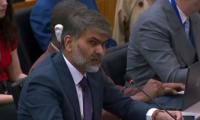The visuals coming out of Pakistan over the last week were jarring and alarming. Uncertainty is reigning. In the face of the tyranny of the urgent, it seems like there is no issue more worthy of our collective attention than the rioting on the streets, the arson of public and public property, and the string of arrests that are following.
At moments like this, we mortals may be focusing all our attention too narrowly on political battles that promise to change the course of our country’s political and economic future. However, if you take a look back, more often than not, these turn out to be nothing more than false starts. Time and again, the more things have changed, the more they have remained the same (or gotten worse).
That is why it is important to keep an eye on events, ‘reform agendas’ of all stripes, pushed into the background. These periods of political instability are precisely when those with a longer-term view of things try to usher through legislation under the radar, under cover of darkness, to expand their turf and widen the moats around them.
In the education sector, one such turf war has been going on between the Ministry of Federal Education and Professional Training (MoFEPT) and the Higher Education Commission (HEC) in Islamabad.
At this time, the dynamics between the MoFEPT and the HEC is what education watchers need to keep their eye on. In 2021, in the waning days of the PTI government, the HEC Ordinance had been subjected to not one but two amendments in quick succession at the behest of the chairman of a task force in the PM Office.
The principal reason for bringing those amendments was to bring four major changes to the HEC’s functioning: a) to reduce the HEC chairman’s tenure from four years down to two; b) to revoke the HEC chair’s ministerial status; c) to amend the constitution of the commission’s membership to eliminate all provincial representation and reduce the commission’s size so that a majority of members be MoFEPT / PM Office appointees; and d) to give the MoFEPT control over the appointment of the HEC’s executive director.
The first amendment was so hastily drafted it had to be followed up almost immediately by a second. A third amendment was in the pipeline but could not be approved because political events culminating in the vote of no confidence in April 2022 got in the way.
Although the personalities involved in that turf fight have left public service, elements in the MoFEPT bureaucracy have picked up on the idea and made the mission to make the HEC subservient to the MoFEPT their own, possibly to make up for the loss of influence it suffered in the school education sector at the hands of the 18th Amendment.
The audacity of reducing the commission’s size coupled with the removal of provincial representatives, however, proved a bridge too far – moving the Cabinet Committee for Disposal of Legislative Cases (CCLC) to step in.
Once again, in turbulent political times when everyone’s attention is focused elsewhere, there is yet another amendment ready in the form of another bill, waiting in the wings right now. That amendment is a partial redressal of the CCLC’s reservations and, together with the preceding amendments that have already gone through, would make for two steps backward and one step forward.
It ‘raises’ the tenure of the HEC chair from two to three years (still one short of what it was). It also restores provincial representation in the commission, but still keeps the size of the commission smaller than it was, making it easier to stack its members than it was before. The personalities that began this clash between the MoFEPT / PM Office and the HEC may both be out of office now, but the MoFEPT’s attempt to bring the HEC to heel continues. Will any of these changes bring any improvement for students? I fail to see how.
The education sector is far bigger than the HEC and MoFEPT (whose purview the 18th Amendment has confined to the boundaries of the federal areas). While the HEC is at the receiving end of this power tussle in the capital, the HEC is involved in another struggle for power with provincial HECs. The bill being pushed by the MoFEPT will also designate the HEC as the “sole” standard-setting body whereas previously the HEC set minimum standards giving provinces the autonomy to set additional, higher standards.
Provincial HECs are rightly concerned that this new amendment would relegate their role to policing the HEC’s set standards. Should funds flow directly from the HEC to universities in the province or should these be routed through provincial HECs? Punjab HEC’s position is that post-18th Amendment the HEC cannot usurp the provincial HEC’s authority without the concurrence of the Council of Common Interest (CCI), and has moved to enroll the chief minister for their cause.
Within Punjab, a dynamic similar to the one we have seen between the MoFEPT and HEC in Islamabad is playing itself out between Punjab’s Department of Higher Education and the Punjab HEC.
Finally, with the introduction of higher education commissions at both the federal and later the provincial levels, the relationship between universities, these commissions, and education departments / MoFEPT in several areas, such as the appointment and extension of tenures of vice-chancellors, remains unsettled.
Piling on further, Punjab’s provincial assembly under former CM Chaudhry Pervaiz Elahi, began a new tradition under which MPAs completely bypassed the Department of Education and Punjab HEC in the process of approving charters of new universities. As a result, some very questionable university charters have recently been granted.
If it sounds like universities are at the receiving end of it all, that is not universally true. During the previous Punjab government’s tenure, a number of MPAs were championing a bill that would grant a one-time blanket amnesty to all private universities running sub-par academic programmes that are unable to meet the HEC and Punjab HEC’s standards for accreditation. Like the bill for another amendment to the HEC Ordinance, this bill in the Punjab Assembly could also one day quietly become law.
Furthermore, a private university in Lahore is one of the members of the Punjab HEC. In a conflict of interest, it decreed that in order to be allowed to take their final exams for the current semester, students must first deposit tuition fees for the next semester (still three months away). When students dared to protest against this extortionary move, the Punjab Police promptly put them in their place.
While we watch the next episode of the domestic political circus play out on our screens, we may see yet another bill quietly become law/amendment and the power of one department grows at the expense of another. Whether it is the turf war for budgets and influence between the MoFEPT and HEC in the federal capital, or the HEC and provincial HECs, or Punjab’s Department of Education and Punjab HEC, or MPAs in the Punjab Assembly and the province’s education bureaucracy – all are struggles and negotiations for power among various departments.
Every part of the bureaucracy – federal, provincial, and in-between – is throwing sharp elbows. None of this wrangling that consumes so much of their time is for the improvement of higher education for students. Through all this, students and their parents continue to sit at the bottom of the totem pole.
The writer (she/her) has a PhD in Education.
Pakistan can't afford another status quo budget so it must be budget of imagination, risk-taking and system-level...
Driven by flawed logic, his administration has imposed tariffs designed to artificially rebalance trade
But then, it is not that human beings would succumb to these pressures easily, no matter how enormous
Our failure to do so carries the risk of undermining unity and stability of country
According to Chanakya, secret of strong nation lies in ability to protect its citizens
Rapid economic progress was made possible under Modi's leadership if not ‘Modi's guarantee’







